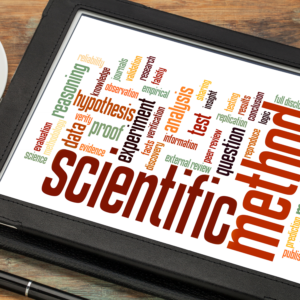In my relatively brief career in research to date, I have used both qualitative and quantitative methods in my work with people with dementia and have enjoyed using both. Perhaps I do enjoy the qualitative slightly more at times. But I confess I have been somewhat surprised that there are still some myths around qualitative research methods. One such myth is that qualitative research methods are the poorer cousin to the more ‘robust’ quantitative research methods. This seems to be based on the belief that qualitative methods lack rigour and are less systematic than quantitative methods, that they are prone to bias and therefore should be interpreted with caution. Well, yes, of course all research should be interpreted with a cautious critical eye. And quantitative methods are also open to error or bias when not systematically and rigorously applied, hence the need for the critical eye. But qualitative methods must not be discounted, they are an important ingredient in a researcher’s arsenal and, when used appropriately, provide extremely valuable and powerful data.

Thematic Analysis or TA for short allows us to systematically extract patterns from these data sets.
So why use qualitative methods? Qualitative methods are often used when the goal of research is to understand the opinions or experiences of a group of people. People do not have a binary set of views, so giving people the opportunity to explain these views, in their own words can be extremely helpful. As researchers, we cannot possibly anticipate the full breadth of these views and experiences. So, asking people open questions in an interview, in a survey or a focus group can elicit a rich data set to inform our work.
This is where Thematic Analysis comes in. Thematic Analysis allows us to systematically extract patterns from these data sets. Thematic Analysis (TA) as described by Braun and Clarke (2006; and 2020) provides a framework for the systematic examination of data. That said, there are lots of different methods and methodologies for qualitative content analysis, including grounded theory, interpretative phenomenological analysis and discourse analysis. TA is not necessarily the best one, just one possible option.
TA can be atheoretical or quite flexible and adapted to or infused with theoretical methods. Most importantly for my work, I have found TA to be extremely usable. Braun and Clarke describe it as the first method that a qualitative researcher should learn, a core method in the researchers’ arsenal. Braun and Clarke published a really well known and well referenced description describing the 6 stages of TA back in 2006. More recently they have published a group of papers extending and explaining this is in more detail (see refs below). And excitingly (according to twitter reports) they have written a book on the topic which is about to be released.
To give you an idea of how it works I wanted to describe the process of data collection and TA methods that I used for an aspect of my PhD work, a few years ago. I wanted to gather the opinions of people living with primary progressive aphasia and their families about what they thought speech and language therapists should be doing to help maintain the conversations and relationships of people with PPA and their families. I ran a number of focus group meetings, which I video recorded and transcribed. Having familiarised myself with the data (phase 1), I then coded the data line by line, identifying anything interesting. During this phase (2) I also worked with some colleagues, who were familiar with TA methods, and we all coded a selection of the data (around 10 pages) and sat down together for a few hours to discuss how codes seemed to be related. This enabled us to identify some potential themes (phase 3). I then revisited all the data, and compared the discussions to my original coding and identified the themes and subthemes (phase 4). I refined the themes and generated definitions and names for the themes (phase 5). Finally, as I wrote up my analysis I further inspected the themes, the extracts and the data to identify and report any additional key elements (phase 6).
This rigorous process – called reflexive Thematic Analysis by Braun and Clarke, allowed me to link the opinions of the participants with their experiences. Without revealing exactly what my results said (I have a paper under review that will reveal all in due course!) this process enabled me to identify how to address these issues and ensure that the intervention I went on to develop could address these needs. In using TA I was able to immerse myself in the data and really focus on the underlying meaning and messages. Of course, this is not without bias, and this must be acknowledged, as with many research methods. But it was so powerful, so valuable and so helpful to use TA to drive my analysis.
This is of course an extremely brief overview of my experience of using TA, but I would recommend anyone who is considering the use of TA with people with dementia, to pick it up and run with it.
Author [1]
[1]
Dr Anna Volkmer [2] is a Speech and Language Therapist and researcher in Language and Cognition, Department of Psychology and Language Sciences, University College London. Anna is researching Speech and language therapy interventions in language led dementia and was once voted scariest speech and language therapist (even her children agree).